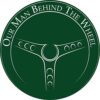Standing tall in between New Oxford Street and Tottenham Court Road Underground station, Centre Point is an iconic 1960s London landmark, designed by Richard Seifert, the well-known Swiss-British architect who owned a Jensen FF.
Today in 2019, the building has been lovingly restored and redeveloped by MICA with some new spaces but managing to retain the essence of the original 1960s design.
Looking for an appropriate vehicle to pair with the classic aesthetic of the building and to pay homage to the designer, MICA approached Cropredy Bridge for two special cars that typify the building. With that in mind, they chose a 1967 Jensen FF Vignale Chassis 6, which has been fully restored by the expert team at Cropredy Bridge Cars and is in concours condition, and a 1974 Jensen Interceptor Mark 3, which features various upgrades taken from Cropredy’s stock list.
With its mix of sharp lines which can be found in the parking area of the building and softer curves of the Jensens, both the building and cars transport you back to a bygone era of innovation and technology and touch of the jet set life of the sixties.
Director of Cropredy Bridge Cars, Matthew Watts commented: “Though we’re lucky enough to surround ourselves with these cars daily through our restoration, sales and servicing work of all classic Jensens, we never tire of the timeless looks of these machines. Seeing these cars in such a setting is a real thrill, and we thank MICA Architects for coming to us and creating this opportunity.”
James Kirk of MICA added: “We were delighted to find the enthusiastic Cropredy Bridge Cars whose technical understanding of a classic car design from the exuberant ‘60s and ‘70s matched our passion for the remarkable architecture of Centre Point from the same era. We have been working for over eight years to restore and renew the buildings and landscape of the complex which were built in the era of the car, with the tower as the centrepiece of a large traffic gyratory system. We have transformed the area by removing the road under Centre Point Link, refocussing the complex towards a new public square. Cropredy Bridge’s spectacularly restored classic Jensens complemented the renewed architecture of the complex and provided a striking allusion to the excitement and exuberance of the era in which it was originally made.”
Cropredy Bridge Cars was founded back in 1972 and has become a world leader in the Jensen marque, with a reputation for professional sales, servicing and restoration of these iconic cars.
The company will shortly be unveiling its flagship model, the Interceptor CB, taking the Interceptor to new levels. This bespoke restoration programme will see the iconic Interceptor restored, upgraded and finished to modern standards while retaining the character of the classic grand tourer.
Built in West Bromwich, Jensens were first introduced with the launch of the new Interceptor in 1966. The car used an all-steel 2-door body designed by Italian coachbuilder Vignale, which featured a distinctive large curved rear windscreen that opened like the hatchback of today. The engine was unusually large for the UK, being an American Chrysler V8, but despite the car’s weight, gave it superb performance. It was a pioneering car, being one of the first production cars to have power steering and ABS as standard and even created a four-wheel drive version some 20 years before Audi launched their Quattro.
“Supersonic velvet” was the strapline created by their advertising agency at the time, which perhaps sums up this immortal car perfectly. Jensens made many a TV appearance in product placements, being driven by Simon Dutton in The Saint, and was adored by the stars with the likes of Cliff Richard and Henry Cooper owning them.
The Mark II interceptor was introduced in 1969 with some minor changes being made to the front styling and interior, with a further update being made in 1971 with the introduction of the Mark III, which had a larger capacity engine and alloy wheels. The company also introduced a faster SP model with the engine from the Mark II Interceptor but fitted with three twin choke carburettors. SP meaning “six pack” which referred to the number of carburettor barrels. The SP also had some cosmetic differences such as a louvred bonnet and vinyl covered roof.
A pretty convertible model was introduced between 1975 and 1976 but production of the Interceptor ceased in 1976 when Jensen Motors sadly went into receivership, partly as a result of the oil crises and cost of running the cars as they were very thirsty. There was an attempt to resurrect the Interceptor in 1984 with the Mk IV but it was short lived and closed up shop in 1991 with very few cars actually being built.
MICA is an award-winning architectural practice based in London, Oxford and Edinburgh and was appointed by developer Almacantar in 2011 to lead the Centre Point restoration work. You can find out more at www.micaarchitects.com
For more information on Cropredy Bridge Cars please visit: www.cropredybridge.com
Author Bio:
Simon Burrell is Editor of Our Man Behind The Wheel, a professional photographer and former saloon car racing driver.
Photo credit: Andy Stagg/MICA Architects






I am still using my desk calendar writing pad from 1984 from Cropredy Bridge Garage as it was then known. I was given it when I took my 1971 Interceptor 111 for service and they gave me a 1974 Coupe to drive for the day.